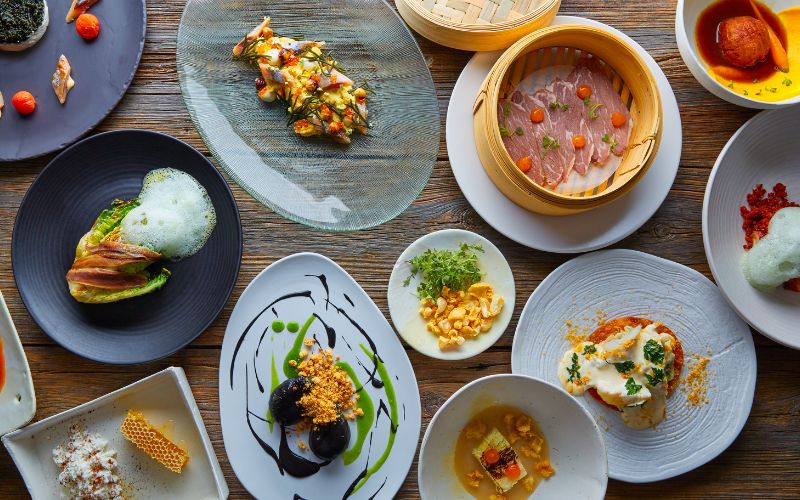
In today’s fast-paced world of instant meals and fusion cuisines, there’s something magical about delving into the culinary treasures of the past. The flavors, techniques, and ingredients that have shaped our gastronomic history offer us a window into cultures and societies long gone. From ancient civilizations to centuries-old traditions, the world of food has a rich tapestry that continues to inspire and influence our modern palates. In this culinary journey, let’s travel back in time to explore the delightful gastronomic heritage that has stood the test of time.
Unearthing Ancient Delicacies
As we peer into the annals of history, we discover that food has always been an integral part of human existence. Ancient civilizations crafted culinary wonders that showcased their resourcefulness and creativity. From the bread of ancient Egypt to the spice routes of the Silk Road, flavors were exchanged, techniques were refined, and the foundation of cuisines we enjoy today was laid.
Mesopotamia and the Birth of Farm-to-Table: The fertile lands of Mesopotamia gave rise to some of the earliest forms of agriculture. People in this region cultivated grains, legumes, and vegetables, forming the basis of farm-to-table dining. The mixing of these ingredients gave birth to dishes that still resonate in Middle Eastern cuisine, such as lentil stews and barley-based porridges.
The Allure of Ancient Rome: The Roman Empire, known for its opulence, also boasted a diverse culinary landscape. They relished dishes like roasted meats, honey-glazed fruits, and wines flavored with herbs and spices. The concept of elaborate banquets and communal dining originated here, setting the stage for lavish feasts that transcended generations.

Medieval Marvels
The Middle Ages marked an era of ingenuity in the culinary world. Despite limited resources and challenging conditions, medieval cooks managed to craft dishes that married simplicity with creativity.
Spices and Silk Roads: The medieval period was characterized by the spice trade, a phenomenon that connected distant cultures through flavors. Spices like cinnamon, pepper, and nutmeg were highly valued not only for their taste but also for their preservation properties. They transformed mundane ingredients into extraordinary delights, inspiring dishes like spiced meats, sweet pastries, and aromatic stews.
Preservation Techniques: Before refrigeration, preserving food was an art form. Techniques like salting, smoking, and fermentation allowed societies to store ingredients for extended periods. Foods like salted fish, pickled vegetables, and aged cheeses were not only sustenance but also a testament to human adaptability.
Traditional Fare from Around the World
Every corner of the globe carries its own culinary legacy, reflecting its history, geography, and cultural interactions. Exploring these traditions offers us a glimpse into the lives and tastes of generations long gone.
Japanese Kaiseki: The Japanese practice of kaiseki, a traditional multi-course meal, traces its roots back to the 16th century. This intricate dining experience showcases the harmony between taste, texture, and presentation. Kaiseki’s emphasis on seasonality and mindfulness in eating has deep cultural significance.
Indian Ayurveda: Ayurveda, an ancient Indian system of medicine, extends its wisdom to the culinary world. The balance of flavors, known as “rasa,” is a fundamental principle. Dishes are designed to align with the body’s constitution and the seasons, promoting health and well-being through food.
Preserving Culinary Heritage
In a world where culinary fads come and go, preserving our culinary heritage is vital. Many cultures continue to honor their traditional recipes and cooking methods, passing them down through generations.
Grandmother’s Kitchen: Family recipes, often passed down from grandmothers and grandfathers, are more than just instructions for a meal. They’re threads that weave together generations, carrying with them the flavors of childhood and the warmth of shared moments.
Cultural Revival: Many regions are experiencing a resurgence of interest in their culinary heritage. Traditional cooking techniques, long-forgotten ingredients, and ancestral recipes are being embraced anew, creating a bridge between the past and the present.
In Conclusion
The culinary treasures of the past are more than just dishes; they’re windows into history, culture, and human creativity. Exploring these gastronomic legacies connects us with the resilience of our ancestors and the artistry they infused into their meals. As we savor the flavors of bygone eras, we honor those who came before us and ensure that their culinary wisdom lives on, enriching our tables and nourishing our souls. So, let’s embark on this delicious journey into the past, one bite at a time.



